Many of our guests are birders, but that is just one launching-off point into nature. I'd say most people who come to Bruny Island and who come to Inala, are people who love all the wide span of nature. So we do make sure that our guides can tell them about all the other factors of nature as well as the birds.
With the mammals on Bruny, we have such things as the eastern quoll, incredibly endangered and yet we have a stronghold for them here on the island. So on a night tour on Bruny, we may see the eastern quoll - both the dark and the light morph.
At the same time we might see a white wallaby - our wonderful mutants here, maybe a golden possum, and maybe then a long-nosed potoroo, whose numbers are doing well on Bruny as well, especially due to our excellent cat management project.
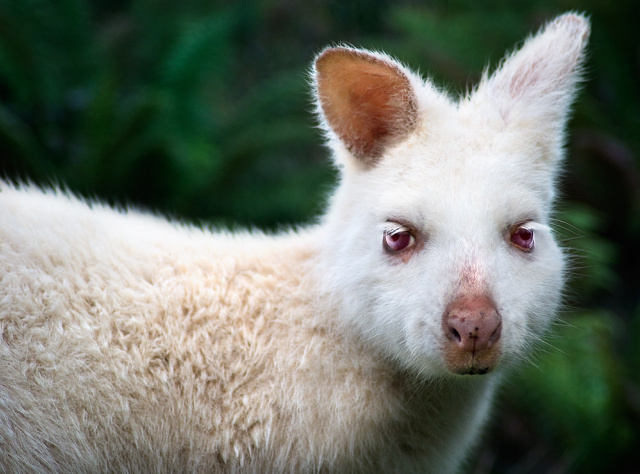
Then during the day there are the paddy melons, the wallabies. Of course we love them and we have them in great numbers. And on the smaller side you might get lucky and see a rakali, which used to be known as water rat. Or maybe a dusky antechinus scooting by, especially here in the Jurassic Garden at Inala. They absolutely love it. So there's a plethora of gorgeous mammals.
Then there are our reptiles - all three snakes are on Bruny Island - the tiger, and then the copperhead and also the white lipped snake.

And sometimes we are seeing the skinks, or maybe a mountain dragon or a blotch blue tongue lizard.
If we go out on the water we may see some whales, the humpback and the southern right whale. We might see some Antarctic fur seals or some dolphins. Every day is hugely different and seasonal, but always giving something glorious.
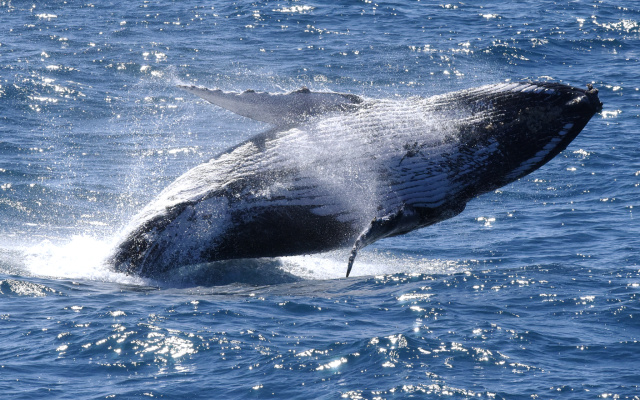
Now, all the birds! To be endemic means you're only from one location and the twelve endemic birds of Tasmania are only in Tasmania. They are all on Bruny Island and most of them are bush birds. So we spend our time exploring the different forest types around Bruny to find all these glorious birds.
They range from the ones you see running past you like the native hen, completely flightless - it's also known as turbo chook, which is why it goes past with a rate of knots - to the ones that you might get up high in the canopy, like some of the honey eaters, the strong-billed, the black-headed, the yellow-throated honeyeaters.

They take a wee bit more searching out and you need to know what kind of trees they like.
We have wonderful coastal birds. We have things like the short-tailed shearwaters coming down from the Aleutian Islands of Alaska to seasonally breed with us, and they will go to the rookery on the Neck. They and the penguins share that space and have their burrows underground.
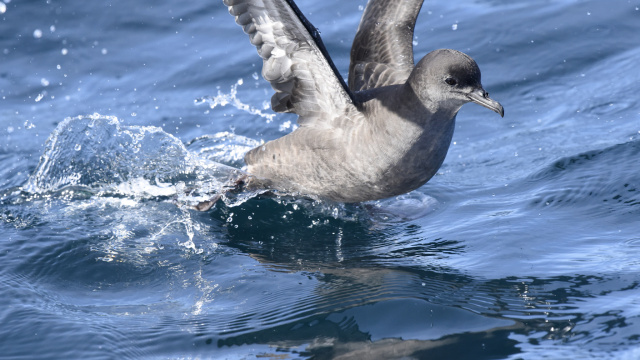
Going out on the boats you might see some of the shy albatross offshore as well, or get very lucky and maybe see some prions. And then we have things in the coastal heath, maybe a tawny-crowned honeyeater living on top of the low coastal banksias down on South Bruny.
So there's huge diversity to look for in amongst the foliage, but then flying overhead the raptors come by. We have six raptors we're going to see most frequently on Bruny. Both the eagle types - white-bellied sea eagle and the wedge-tailed eagle. Two goshawks - the grey goshawk, white morph, and the brown goshawk. And then the brown falcon and the swamp harrier.
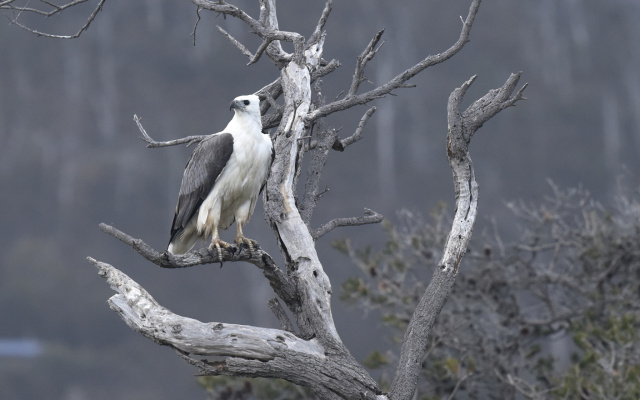
All six of them are seen frequently here in the Inala Valley, but you get lucky a lot on Bruny with raptors, especially in the winter. So there's never not a bird passing by at any time, and their calls echo out everywhere.
The sound of the yellow-tailed black cockatoo always makes everyone raise their head because it's so recognizable, but the teeny, tiny peeping noise of the scrub tit will get the birders far more excited because it's minute noise, but it's so rarely seen.
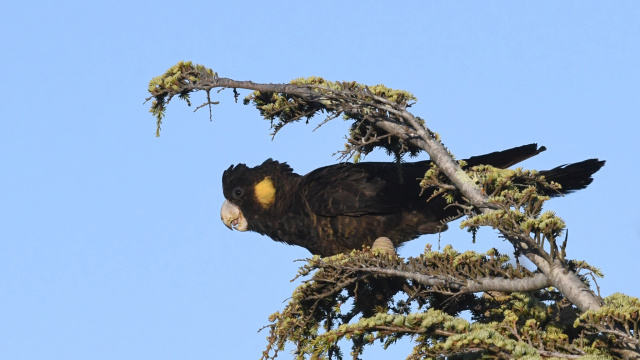
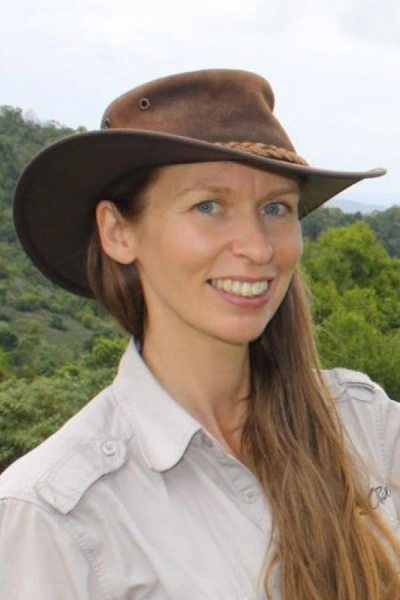
Cat Davidson
Ecology and Birding Tour Guide
Many of our guests are birders, but that is just one launching-off point into nature. I'd say most people who come to Bruny Island and who come to Inala, are people who love all the wide span of nature. So we do make sure that our guides can tell them about all the other factors of nature as well as the birds.
With the mammals on Bruny, we have such things as the eastern quoll, incredibly endangered and yet we have a stronghold for them here on the island. So on a night tour on Bruny, we may see the eastern quoll - both the dark and the light morph.
At the same time we might see a white wallaby - our wonderful mutants here, maybe a golden possum, and maybe then a long-nosed potoroo, whose numbers are doing well on Bruny as well, especially due to our excellent cat management project.

Then during the day there are the paddy melons, the wallabies. Of course we love them and we have them in great numbers. And on the smaller side you might get lucky and see a rakali, which used to be known as water rat. Or maybe a dusky antechinus scooting by, especially here in the Jurassic Garden at Inala. They absolutely love it. So there's a plethora of gorgeous mammals.
Then there are our reptiles - all three snakes are on Bruny Island - the tiger, and then the copperhead and also the white lipped snake.

And sometimes we are seeing the skinks, or maybe a mountain dragon or a blotch blue tongue lizard.
If we go out on the water we may see some whales, the humpback and the southern right whale. We might see some Antarctic fur seals or some dolphins. Every day is hugely different and seasonal, but always giving something glorious.

Now, all the birds! To be endemic means you're only from one location and the twelve endemic birds of Tasmania are only in Tasmania. They are all on Bruny Island and most of them are bush birds. So we spend our time exploring the different forest types around Bruny to find all these glorious birds.
They range from the ones you see running past you like the native hen, completely flightless - it's also known as turbo chook, which is why it goes past with a rate of knots - to the ones that you might get up high in the canopy, like some of the honey eaters, the strong-billed, the black-headed, the yellow-throated honeyeaters.

They take a wee bit more searching out and you need to know what kind of trees they like.
We have wonderful coastal birds. We have things like the short-tailed shearwaters coming down from the Aleutian Islands of Alaska to seasonally breed with us, and they will go to the rookery on the Neck. They and the penguins share that space and have their burrows underground.

Going out on the boats you might see some of the shy albatross offshore as well, or get very lucky and maybe see some prions. And then we have things in the coastal heath, maybe a tawny-crowned honeyeater living on top of the low coastal banksias down on South Bruny.
So there's huge diversity to look for in amongst the foliage, but then flying overhead the raptors come by. We have six raptors we're going to see most frequently on Bruny. Both the eagle types - white-bellied sea eagle and the wedge-tailed eagle. Two goshawks - the grey goshawk, white morph, and the brown goshawk. And then the brown falcon and the swamp harrier.

All six of them are seen frequently here in the Inala Valley, but you get lucky a lot on Bruny with raptors, especially in the winter. So there's never not a bird passing by at any time, and their calls echo out everywhere.
The sound of the yellow-tailed black cockatoo always makes everyone raise their head because it's so recognizable, but the teeny, tiny peeping noise of the scrub tit will get the birders far more excited because it's minute noise, but it's so rarely seen.

You might like...

The magic of Bruny Island

Bruny Island launch: Bob Graham on the hidden world behind the photos

The incredible diversity of Bruny Island

Tasmania: every day's a birding day
Newsletter
Sign up to keep in touch with articles, updates, events or news from Kuno, your platform for nature
